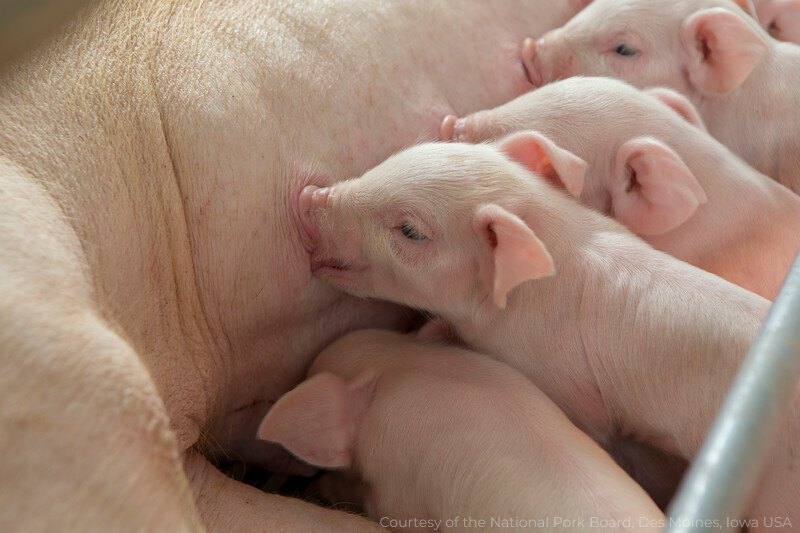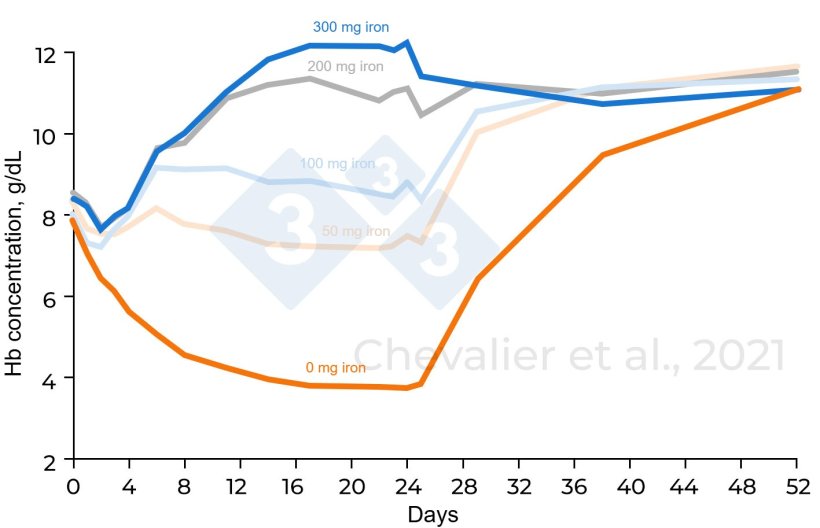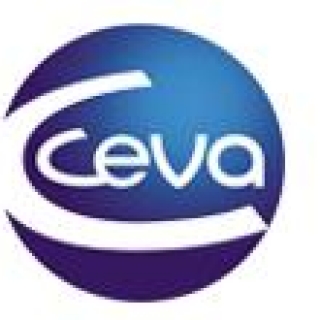The importance of iron
Iron makes up 4.5% of the Earth's crust, but in living beings, it is a trace element, making up less than 1%.
Iron is obtained through the diet and can be stored (even in large quantities) for later use. Iron is essential for life because:

- It is needed for the transport and fixation of oxygen by hemoglobin and myoglobin groups.
- It is a coenzyme for countless enzymes (catalases, cytochromes, peroxidases, xanthine oxidases, flavoproteins, succinate dehydrogenase, etc.) with various functions that are essential for health and life.
Iron and pigs: How much do they get? How much do they need?
Piglets are born with a total of 40-50 mg of iron, which provides reserves to meet their physiological needs for the first 2-3 days. However, only about 6.5-7 mg of that is actually reserves, while the rest is bound to heme (Macrovichalis et al., 2010). From birth until weaning, the only direct source of iron is the sow’s milk, but sows have a limited ability to transfer iron through their milk.
Therefore, the iron content in potential sources would be:
- Colostrum: 2 mg/day/piglet.
- Milk: 1 mg/day/piglet (Svoboda and Drábek, 2005).
- Environmental iron: theoretically, rooting provides 10-15 mg/day/piglet.
Pigs are the only species in which postnatal iron-deficiency anemia occurs systematically due to congenital iron deficiency. To prevent this, iron is administered within the first 3-4 days of life, either parenterally or orally.

Recommendations vary from 100 to 150 mg/piglet when used preventively and up to 200 mg when treating established anemia (National Pork Board, 2021). These recommendations are generally for elemental iron. To supply 200 mg of elemental iron, 370 mg of iron dextran must be administered.
Iron requirements will vary depending on piglet growth and metabolism. Under current conditions, with piglets growing from 5 to 6 kg over a period of 21 days, between 310 and 380 mg of iron is required (Van Gorp et al., 2012), similar to the requirement established by Kamphues of approximately 369 mg.
Considering iron intake and requirements during a 21-day lactation period, we can estimate a deficit of between 140 and 150 mg of iron, a value similar to the iron administered during the first days of life.
Does injecting more iron into the piglets during processing change the situation?
According to the study by Chevalier et al. (2021), when injecting different doses (0, 50, 100, 200, and 300 mg), the best growth was observed in animals that received 200 and 300 mg. When observing the weight of the animals:
- At 22 days of age, there are no differences between groups.
- At 38 days of age, there is a tendency for a difference between all those who received iron and the group that did not, with a difference of more than 4 kg in body weight.
- At 52 days, there were no significant differences in weight. This may mean that piglets experience compensatory growth once they begin receiving exogenous iron through feed.
Hemoglobin (Hb) concentration allows the effectiveness of the method used to supply iron to be evaluated, given that the heme group is the main fixative for this metal. In the study cited above, pigs that received iron doses of 0 and 50 mg had Hb concentrations below 9 g/dl until day 38 and day 29, respectively. Iron-deficiency anemia is often defined as an Hb concentration below 9 g/dL, with Schlam's Veterinary Hematology (Thorn, 2010) reference range for Hb concentration being 10-16 g/dL.

Figure 1. Hemoglobin concentration according to different amounts of iron administered (adapted from Chevalier et al., 2021)
What about when lactation lasts longer than 21 days?
If weaning is extended by one week, piglets will grow to 7.5 kg during lactation with iron requirements that may have increased to 500 mg, far beyond what is administered, what the piglet acquires in milk, and the reserves it had at birth.
Wouldn't it be a good idea to administer a second dose of iron during lactation?
Once again, we find various studies. Chen et al. (2019) demonstrated that modifying the program by administering two small doses of iron (40 mg Fe/kg BW) on days 3 and 14 of life had clear benefits:
- Weight gain increased compared to a single dose (150 mg/kg BW) at 3 days of age.
- Dietary iron absorption improved by minimizing the expression of hepcidin (a hormone that acts as a negative regulator of iron absorption and mobilization from the liver, spleen, and bone marrow).
- Iron toxicity decreased by eliminating oxidative stress and preventing hepatocyte autophagy.
The injection of 40 mg Fe/kg BW on the third day was essential and sufficient to prevent iron deficiency and promote intestinal morphological development.
Similarly, Chevalier et al. (2023) administered 200 mg of iron dextran on the first day of life and another 200 mg at 6-8 days. The administration of this second iron injection resulted in an increase in Hb at weaning and at the end of the nursery period, as well as a higher average daily gain from weaning to final market weight, which translated into a difference in final body weight of approximately 3 kg and an increase in loin yield.
Therefore, there are arguments in favor of a second administration of iron during lactation.
Another strategy that has been attempted is supplementing the sow with iron during gestation, but this has not produced clear results in piglets in different studies, which means that the sow is not good at mobilizing iron to colostrum or milk.
Conclusions
We have been administering iron to piglets since the early 20th century, but we have not reviewed the amount administered for decades. The truth is that two things have changed fundamentally: the animals' growth capacity and the fact that we now wean them a little later to try to produce heavier animals. Perhaps it is time to review the doses or administration protocols, such as a double administration during lactation.




